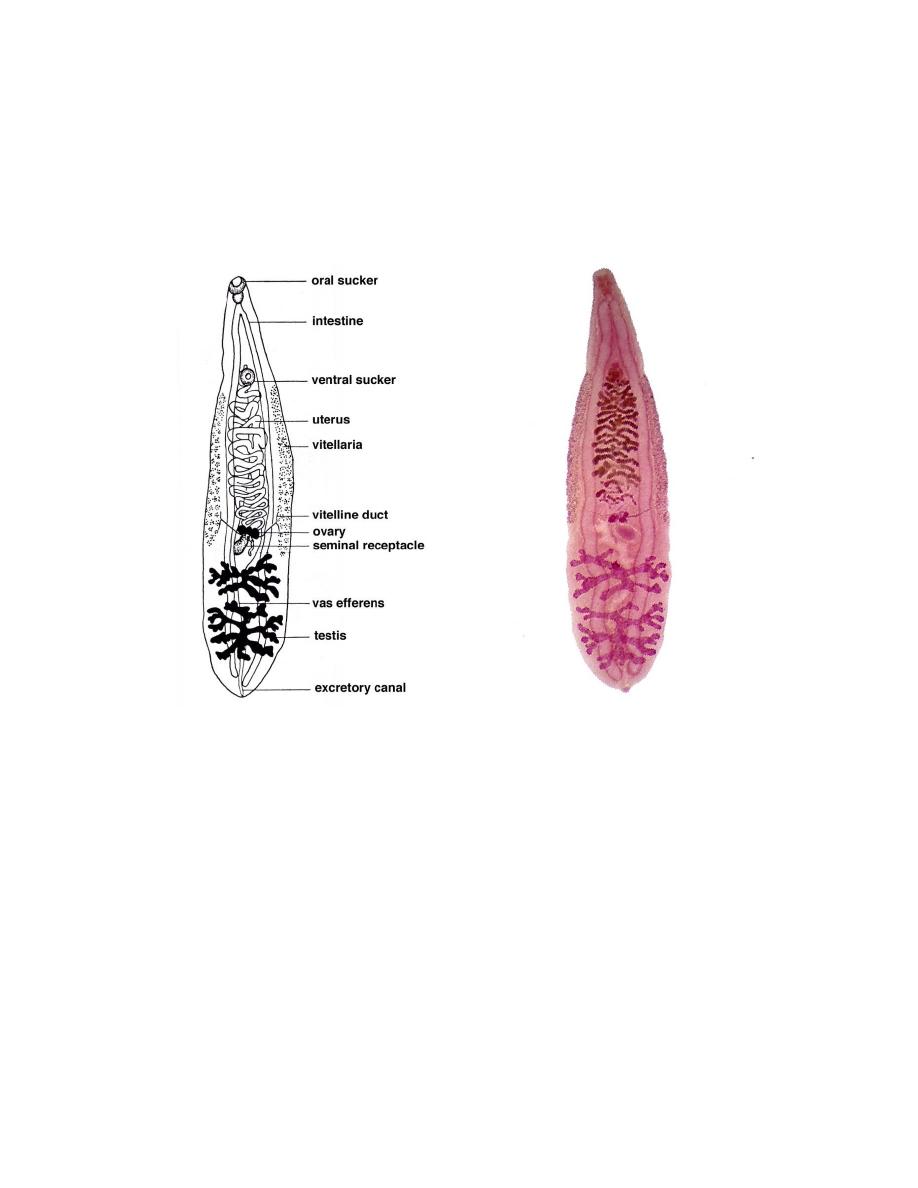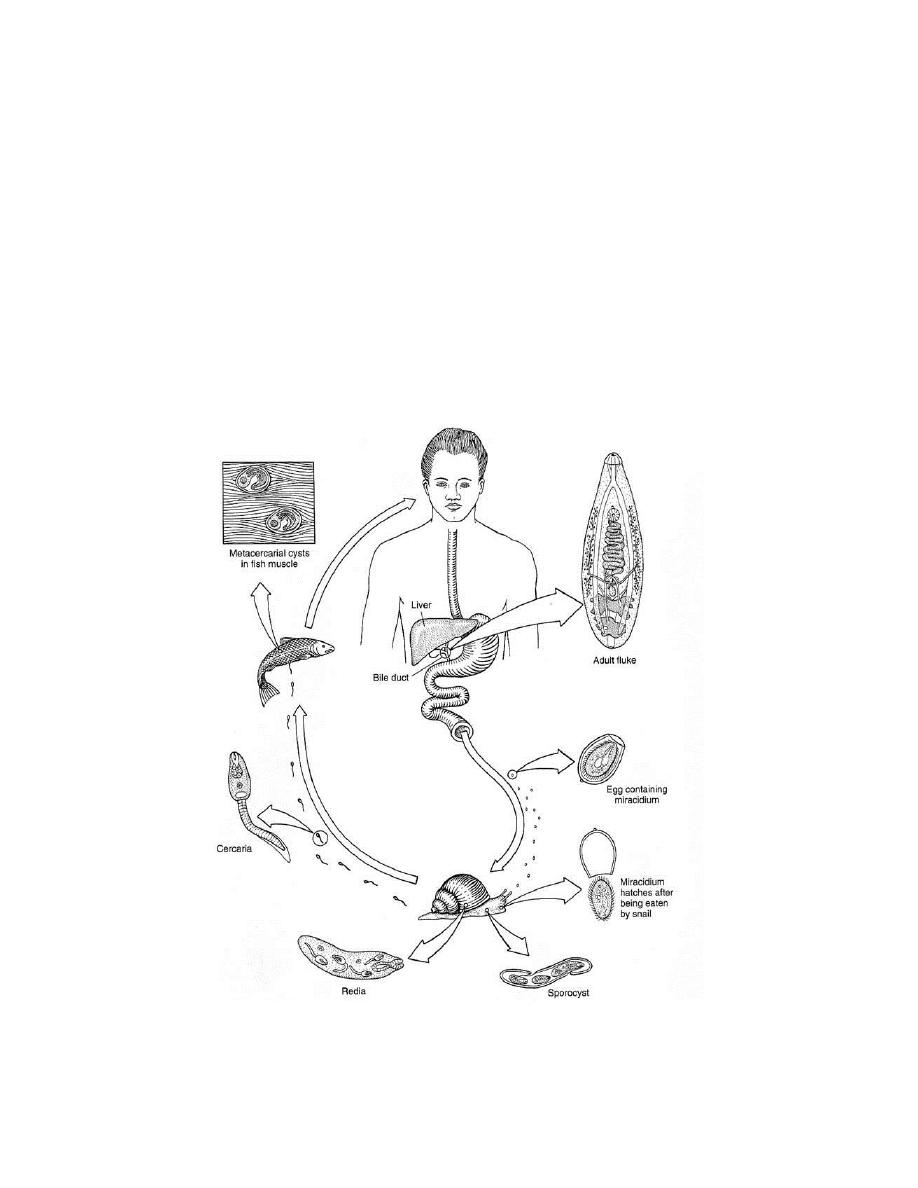
1
Clonorchis sinensis
Clonorchis sinensis (Cobbold, 1875) Looss, 1907, the Chinese liver fluke, was first
reported by McConnell (1875) from the bile passage of a Chinese carpenter who
came to autopsy in Calcutta.
Morphology, Biology and Life Cycle
The mature C. sinensis lives typically in bile passages, or may under the surface of
the liver. The worms are elongated, lanceolate, and flat, transparent, golden brown
to pinkish in the living condition and measure 10 to 25 mm. long by 3 to 5 mm.
broad. All important internal structures are visible in the unstained living worm.
The eggs are broadly ovoidal, have a moderately thick, light yellowish-brown shell
with a distinct convex operculum which fits into a circular rim of the shell, and
usually a small knob at the opposite end. They measure 27 to 35 microns in length

2
by 12 to 20 microns in greatest diameter and are fully embryonated when
discharged into the bile ducts and later evacuated in host's feces. They hatch only
when ingested by suitable species of operculate snails (Parafossarulu), the
miracidia penetrate into the soft tissues, where they transform into first-generation
sporocysts, in which second-generation rediae are produced. The third generation
larvae, the cercariae, escape from the snail and swim about for a short time in the
water. In contact with freshwater fishes, the cercariae penetrate into the flesh and
become encysted.
On being eaten in uncooked fish the metacercariae are digested out of the flesh and
excyst in the duodenum, whereupon the larvae migrate to the bile, become attached
and develop into adult worms.
Pathogenicity and Symptomatology

3
Mature Clonorchis sinensis in the bile passages provoke marked hyperplasia of the
biliary epithelium with subsequent dense fibrous encapsulation of the duct. As the
number of worms gradually increases over a period of years, practically all of the
terminal bile ducts come to have reduced lumens, fibrous thickening of the walls
and pressure necrosis of adjacent hepatic parenchyma. The prodromal symptoms
are observed less than a month after exposure and before eggs are detected in the
stools. The clinical onset is gradual or sudden, with chills and fever up to 40° C. In
some cases there was congestive splenomegaly. Eosinophil count ranged from 10
to 40%. Some week later the picture is one of cholecystitis and hepatitis. Chronic
C. sinensis infection in childhood has been recently linked to delayed physical
growth and development.
Diagnosis.
This is based on the recovery of the characteristic eggs by direct fecal films,
sedimentation of the stools, acid-ether technique.
Treatment
Praziquantel is the only medicine recommended by WHO for treatment of
clonorchiasis. It should be administered at the dose of 25 mg/kg three times
daily for 2–3 consecutive days or of 40 mg/kg, single administration.
Epidemiology
Infection is contracted by eating freshwater fish containing the encysted
metacercarial stage of C. sinensis, in a raw condition, pickled in brine, smoked or
dried.
